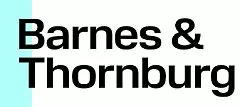- within Intellectual Property topic(s)
- in United Kingdom
- with readers working within the Basic Industries and Retail & Leisure industries
- within Intellectual Property, Cannabis & Hemp and Privacy topic(s)
The U.S. Patent and Trademark Office (USPTO) is testing an AI-powered prior art search pilot that could change how applicants prepare for examination. Beginning Oct. 20, the USPTO will use an internal AI tool to identify potentially relevant prior art before an examiner takes up the application — providing applicants with an early window into possible challenges.
The program reflects the USPTO's broader commitment to integrating AI into examination workflows, following tools like the Similarity Search and DesignVision initiatives. Applicants who join the pilot will receive a pre-examination report listing up to ten documents ranked by relevance, helping them evaluate claim scope and prosecution strategy earlier in the process.
Practical and Strategic Takeaways
Early AI insight can be valuable — but only if interpreted wisely. Automated search results may surface useful references, but human expertise is still essential to assess context, claim scope, and distinguishing arguments.
Participation could shorten prosecution cycles. Applicants who identify and address prior art early may reduce rounds of examination or avoid unnecessary claim amendments later.
It's an experiment worth watching. If successful, this pilot could mark a shift toward a more data-informed and transparent patent examination — one where applicants and examiners start from a more level information baseline.
Not a replacement for professional search. Even as AI improves, counsel-led analysis remains the backbone of high-quality patent drafting and prosecution.
This initiative signals that AI isn't just coming for administrative efficiency — it's becoming a strategic tool in how innovation is evaluated. The firms and applicants who learn to use it well will be better positioned for what's next in patent practice.
The USPTO said in a notice set to be published in the Federal Register on Wednesday that it is implementing a pilot program to evaluate the benefits of using an automated search and sharing search results before the examination of an original, noncontinuing and nonprovisional utility patent application. The office said that an automated search will allow patent applicants to get an "earlier communication regarding potential prior art issues in their application." "The earlier communication may provide the applicant with an opportunity to assess prior art issues before substantive examination and make a more informed decision on how to proceed with the application," the notice said. "The [automated search results notice] also provides a new pathway to identify relevant prior art for patent examiners to improve examination quality and efficiency."
The content of this article is intended to provide a general guide to the subject matter. Specialist advice should be sought about your specific circumstances.


